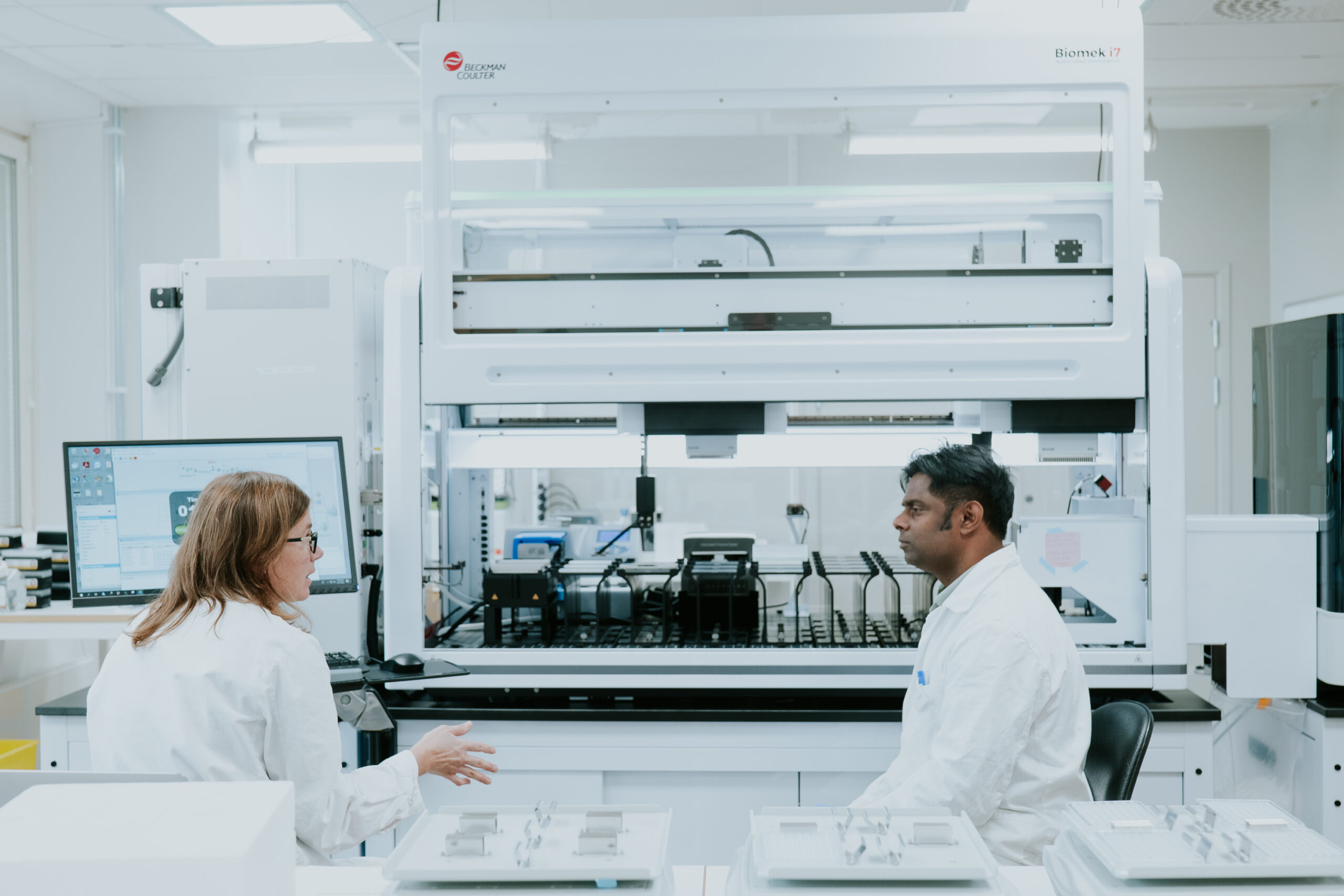Introduction: Navigating a Transformative Year in Drug Discovery
With every year the landscape drug discovery evolves, and 2025 is no different. The pressure to reduce attrition, shorten timelines, and increase translational predictivity is driving the adoption of new technologies and integrated workflows. At the forefront are advancements in artificial intelligence, target validation methodologies, and functionally relevant assay platforms. This blogpost outlines five dominant trends currently reshaping early-stage drug discovery, and the implications they hold for decision-making, investment strategy, and scientific rigor.
1. AI in Drug Discovery: From Promise to Platform
Artificial intelligence has evolved from a disruptive concept to a foundational capability in modern R&D. Machine learning models now routinely inform target prediction, compound prioritization, pharmacokinetic property estimation, and virtual screening strategies.
Recent work by Ahmadi et al. (2025) demonstrated that integrating pharmacophoric features with protein-ligand interaction data can boost hit enrichment rates by more than 50-fold compared to traditional methods (Ahmadi et al., 2025). These approaches are not only accelerating lead discovery but improving mechanistic interpretability—an increasingly important factor for regulatory confidence and clinical translation.
2. In Silico Screening Becomes a Frontline Tool
Computational approaches—such as molecular docking, QSAR modeling, and ADMET prediction—have become indispensable for triaging large compound libraries early in the pipeline. These methods enable the prioritization of candidates based on predicted efficacy and developability, reducing the resource burden on wet-lab validation.
Pandey and Singh (2025) highlight the routine deployment of platforms like AutoDock and SwissADME to filter for binding potential and drug-likeness before synthesis and in vitro screening (Pandey & Singh, 2025). These tools are now central to rational screening and decision support.
3. Hit-to-Lead Acceleration Through AI and Miniaturized Chemistry
The traditionally lengthy hit-to-lead (H2L) phase is being rapidly compressed through the integration of AI-guided retrosynthesis, scaffold enumeration, and high-throughput experimentation (HTE). These platforms enable rapid design–make–test–analyze (DMTA) cycles, reducing discovery timelines from months to weeks.
In a 2025 study, deep graph networks were used to generate 26,000+ virtual analogs, resulting in sub-nanomolar MAGL inhibitors with over 4,500-fold potency improvement over initial hits (Nippa et al., 2025). This represents a model for data-driven optimization of pharmacological profiles.
4. Target Engagement: From Descriptive to Decisive
Mechanistic uncertainty remains a major contributor to clinical failure. As molecular modalities become more diverse—encompassing protein degraders, RNA-targeting agents, and covalent inhibitors—the need for physiologically relevant confirmation of target engagement has never been greater.
CETSA® (Cellular Thermal Shift Assay) has emerged as a leading approach for validating direct binding in intact cells and tissues. Recent work by Mazur et al. (2024) applied CETSA in combination with high-resolution mass spectrometry to quantify drug-target engagement of DPP9 in rat tissue, confirming dose- and temperature-dependent stabilization ex vivo and in vivo (Mazur et al., 2024).
These data exemplify CETSA’s unique ability to offer quantitative, system-level validation—closing the gap between biochemical potency and cellular efficacy.
5. Integrated, Cross-Disciplinary Pipelines Are Now Standard
Drug discovery teams are increasingly composed of multidisciplinary experts spanning computational chemistry, structural biology, pharmacology, and data science. This integration enables the development of predictive frameworks that combine molecular modeling, mechanistic assays, and translational insight.
Such convergence is enabling earlier, more confident go/no-go decisions and reducing late-stage surprises. The organizations leading the field are those that can combine in silico foresight with robust in-cell validation—with platforms like CETSA playing a critical role in maintaining mechanistic fidelity.
Strategic Implications for R&D Teams
Firms that align their pipelines with these five trends are better positioned to:
- Mitigate risk early through predictive and empirical tools
- Compress timelines via integrated, data-rich workflows
- Strengthen decision-making with functionally validated target engagement
In this landscape, technologies that provide direct, in situ evidence of drug-target interaction are no longer optional—they are strategic assets.
The drug discovery field in 2025 is moving decisively toward mechanistic clarity, computational precision, and functional validation. CETSA® exemplifies these priorities, enabling researchers to confirm pharmacological activity where it matters most: in the biological system of interest.
As complexity increases, so does the need for tools that cut through ambiguity. CETSA isn’t just a validation method—it’s a decision-making engine at the heart of translational success.
To explore about how CETSA can increase your chance of success in drug discovery, read our eBook here.
References
- Ahmadi, A. et al. (2025). Linking machine learning and biophysical structural features in drug discovery. Frontiers in Molecular Biosciences, 11.
- Mazur, M. T. et al. (2024). Molecular Targeted Engagement of DPP9 in Rat Tissue Using CETSA, SP3 Processing, and Absolute Quantitation Mass Spectrometry. ACS Chemical Biology.
- Nippa, D. F. et al. (2025). Expediting hit-to-lead progression in drug discovery through reaction prediction and multi-objective molecular optimization.
- Pandey, A. et al. (2025). Revolutionizing Drug Discovery and Development. 16–17.






